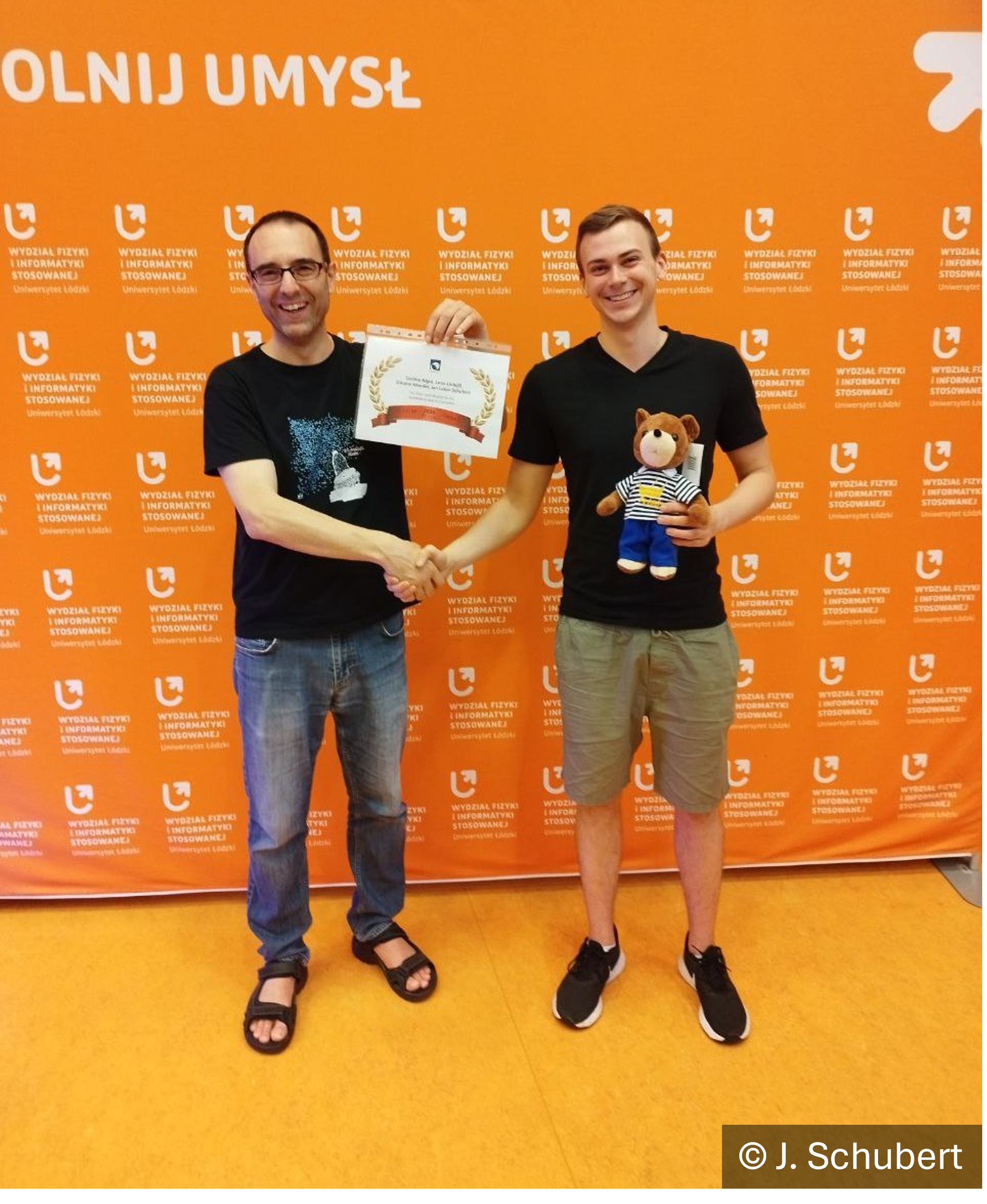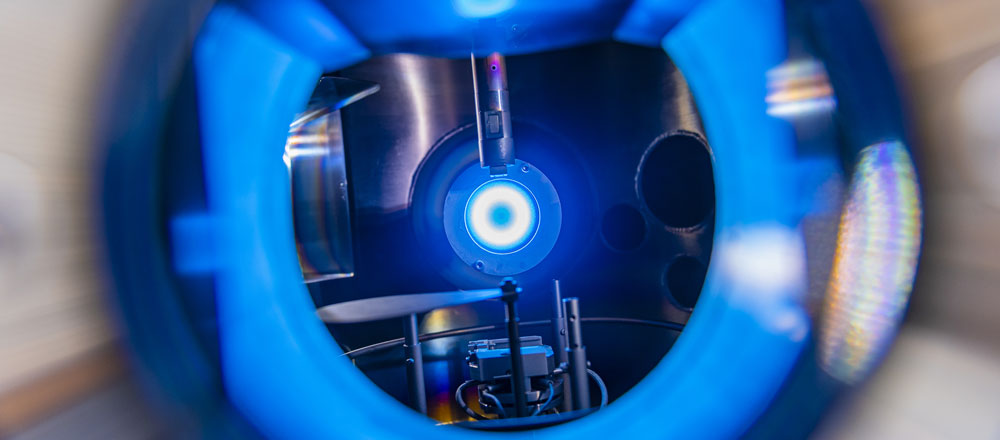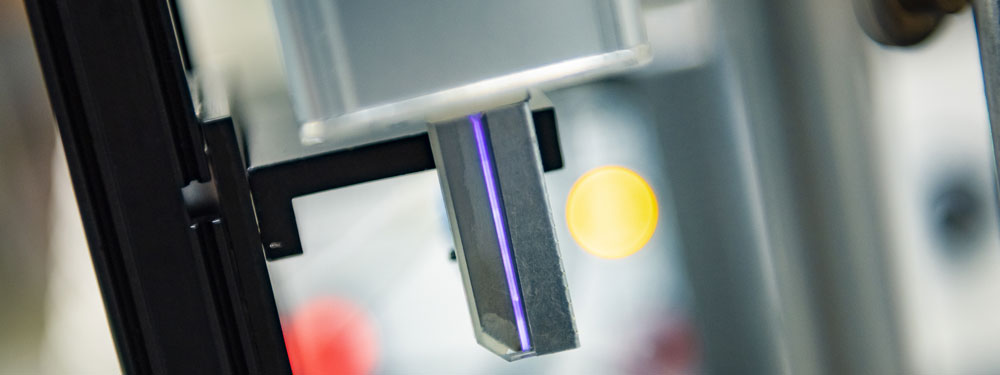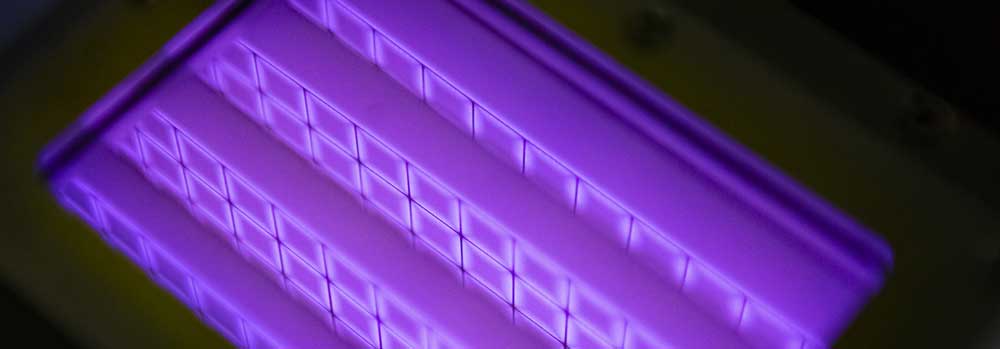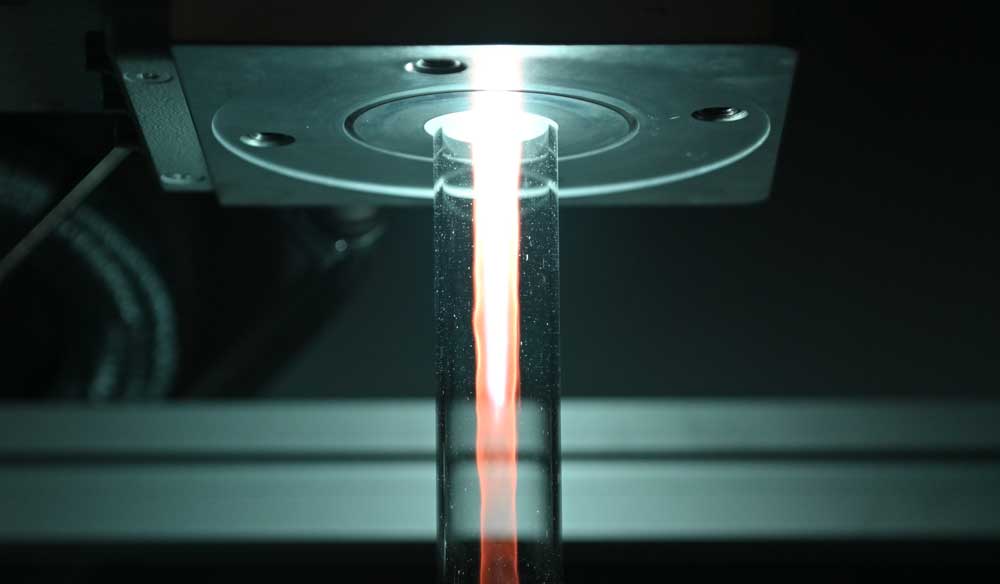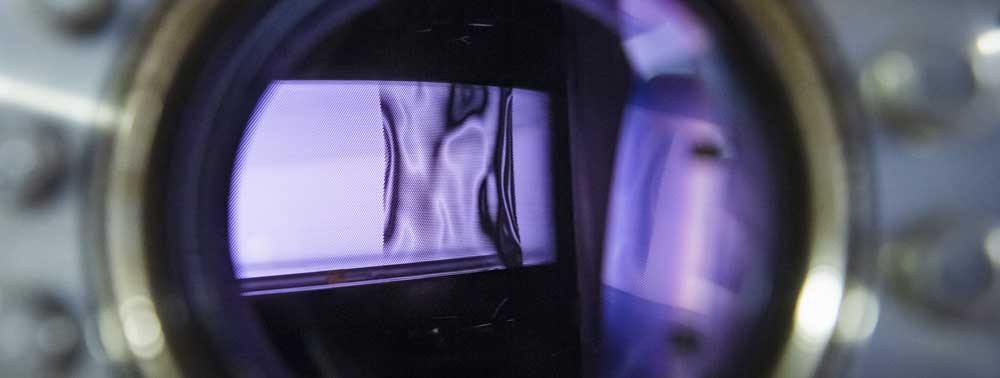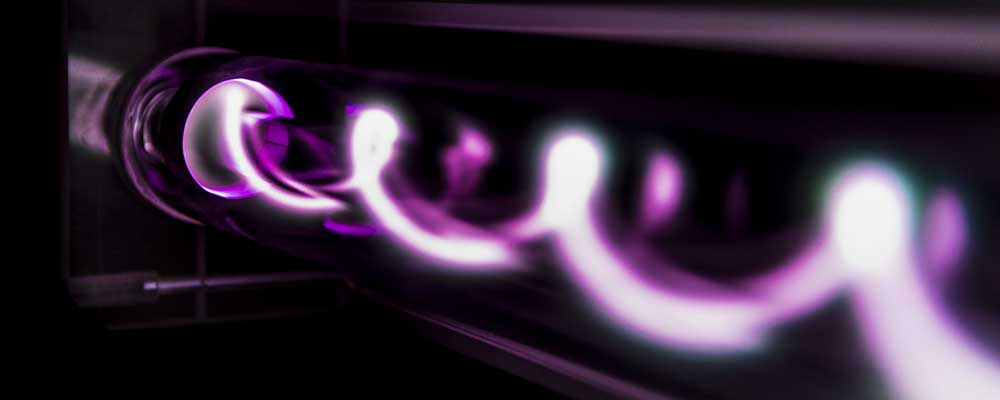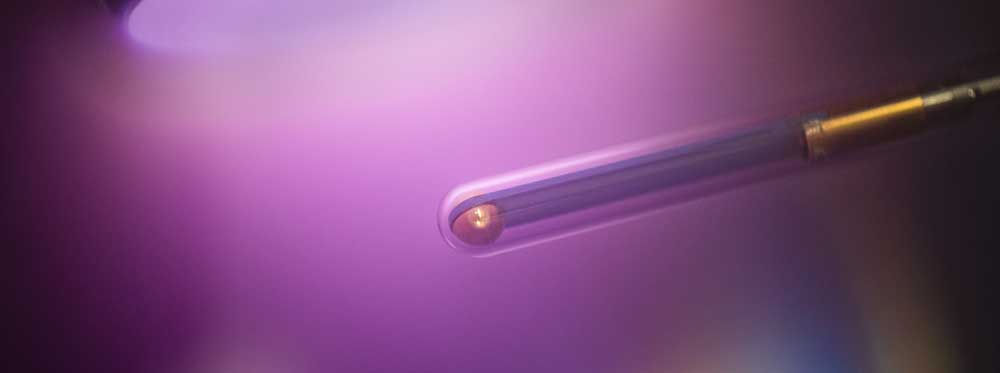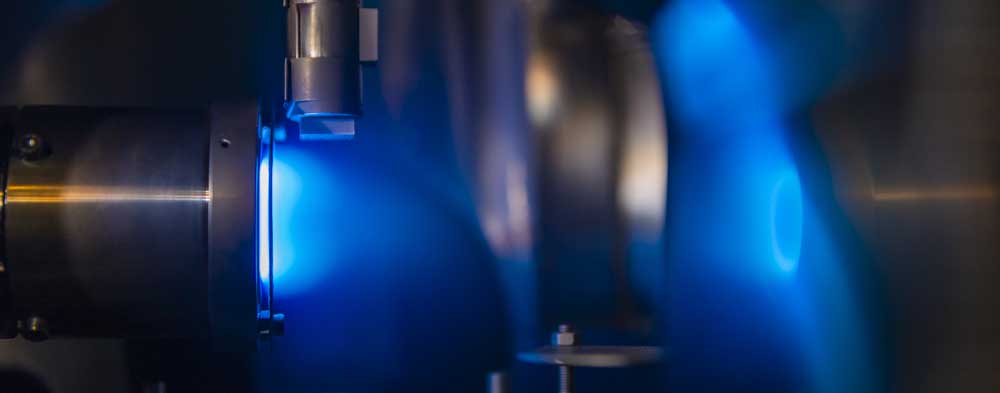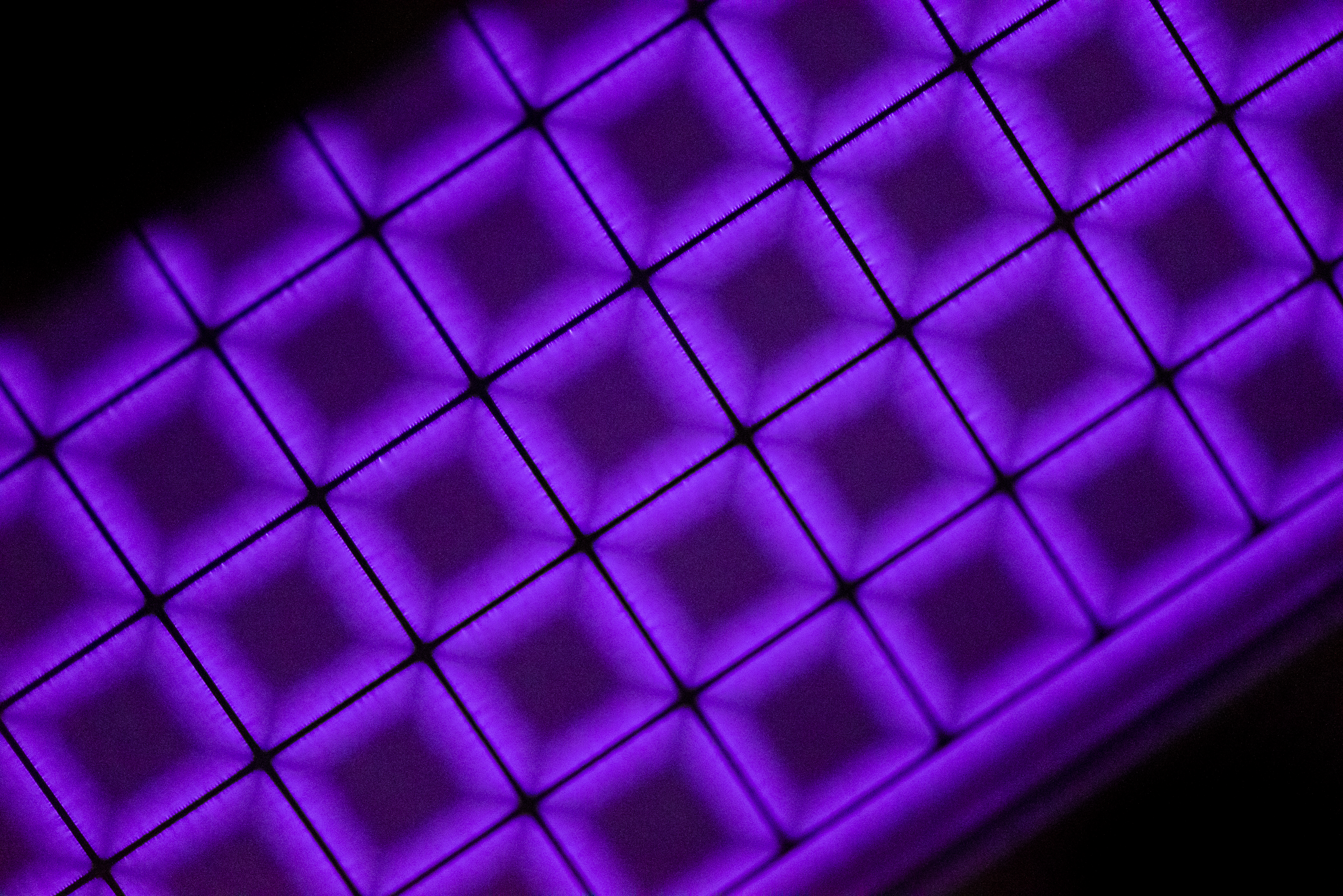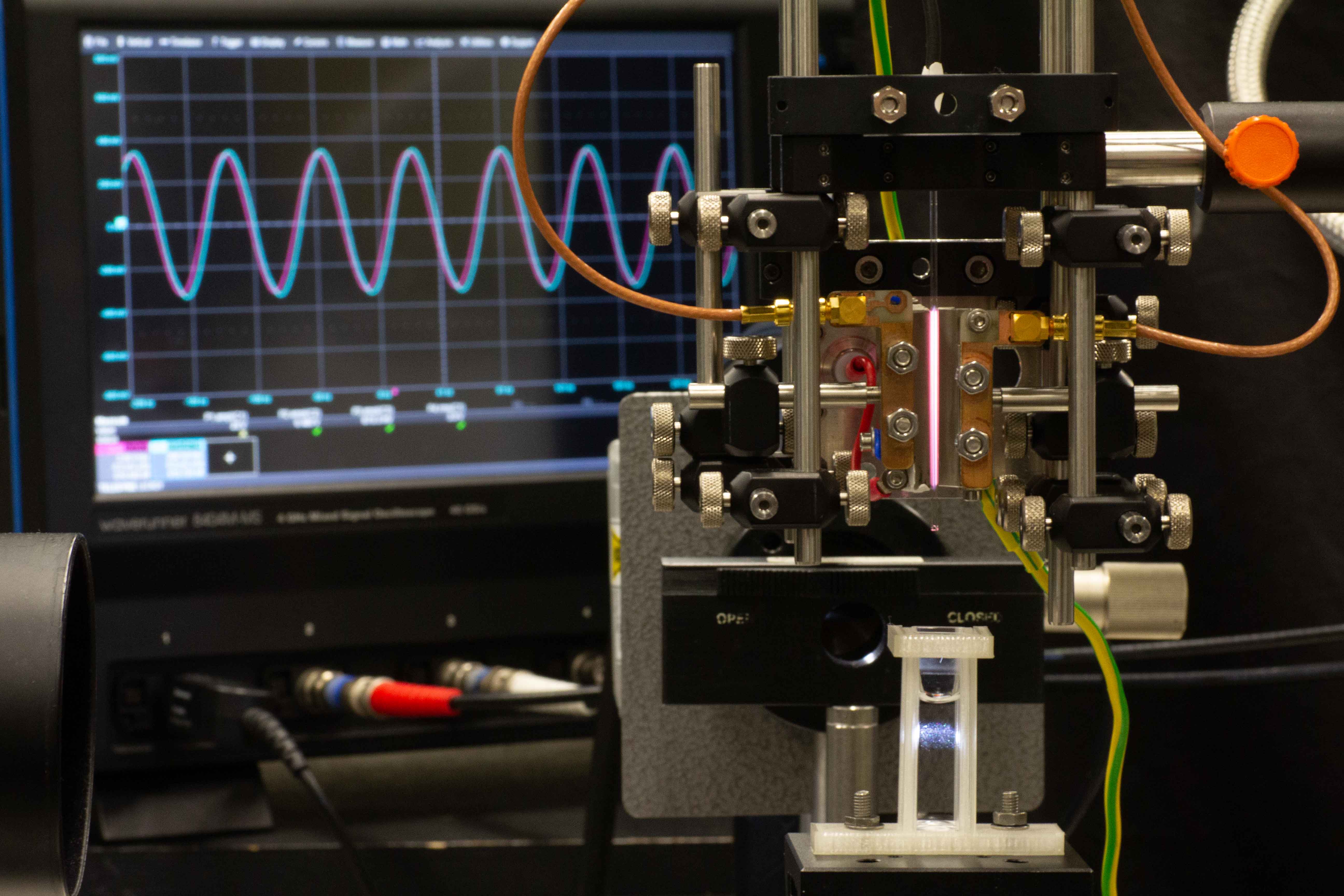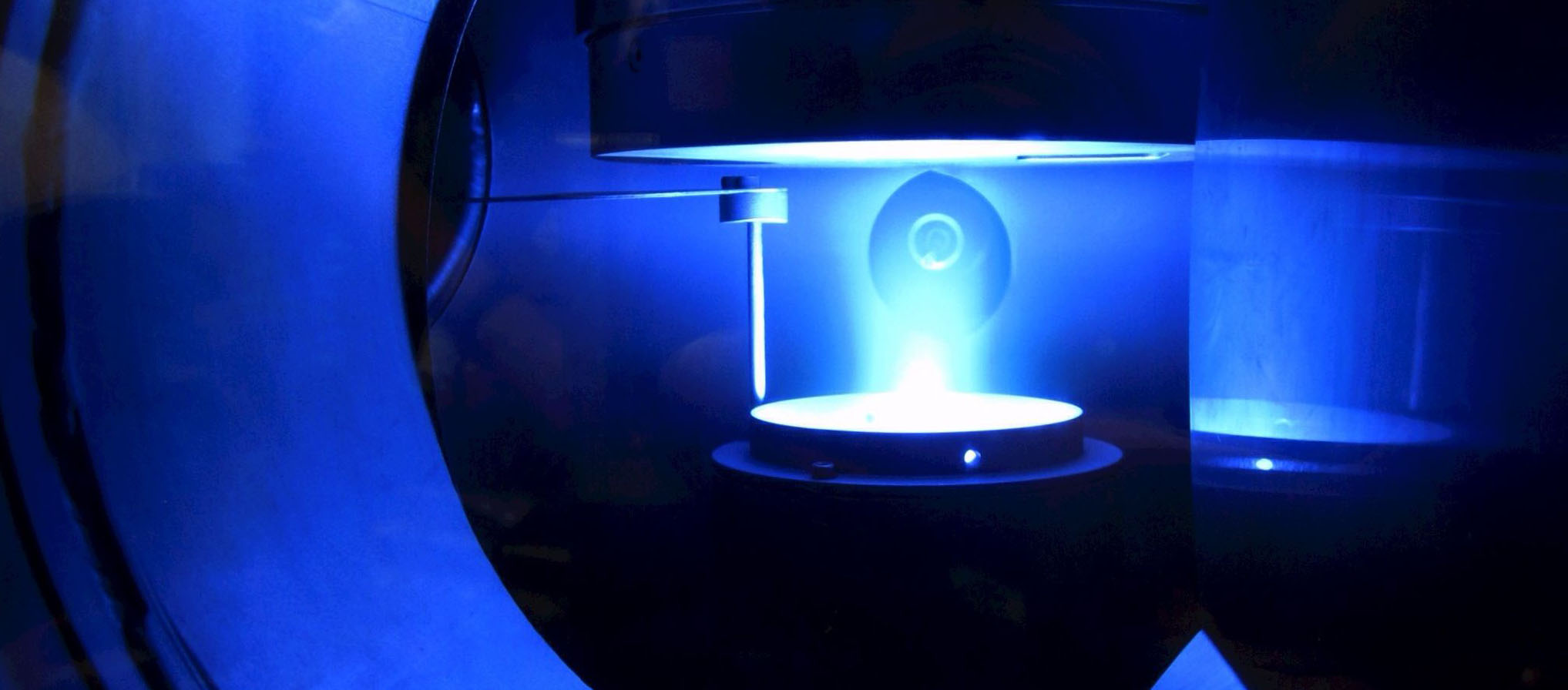- Details
Congratulations to Prof. Julia Tjus!
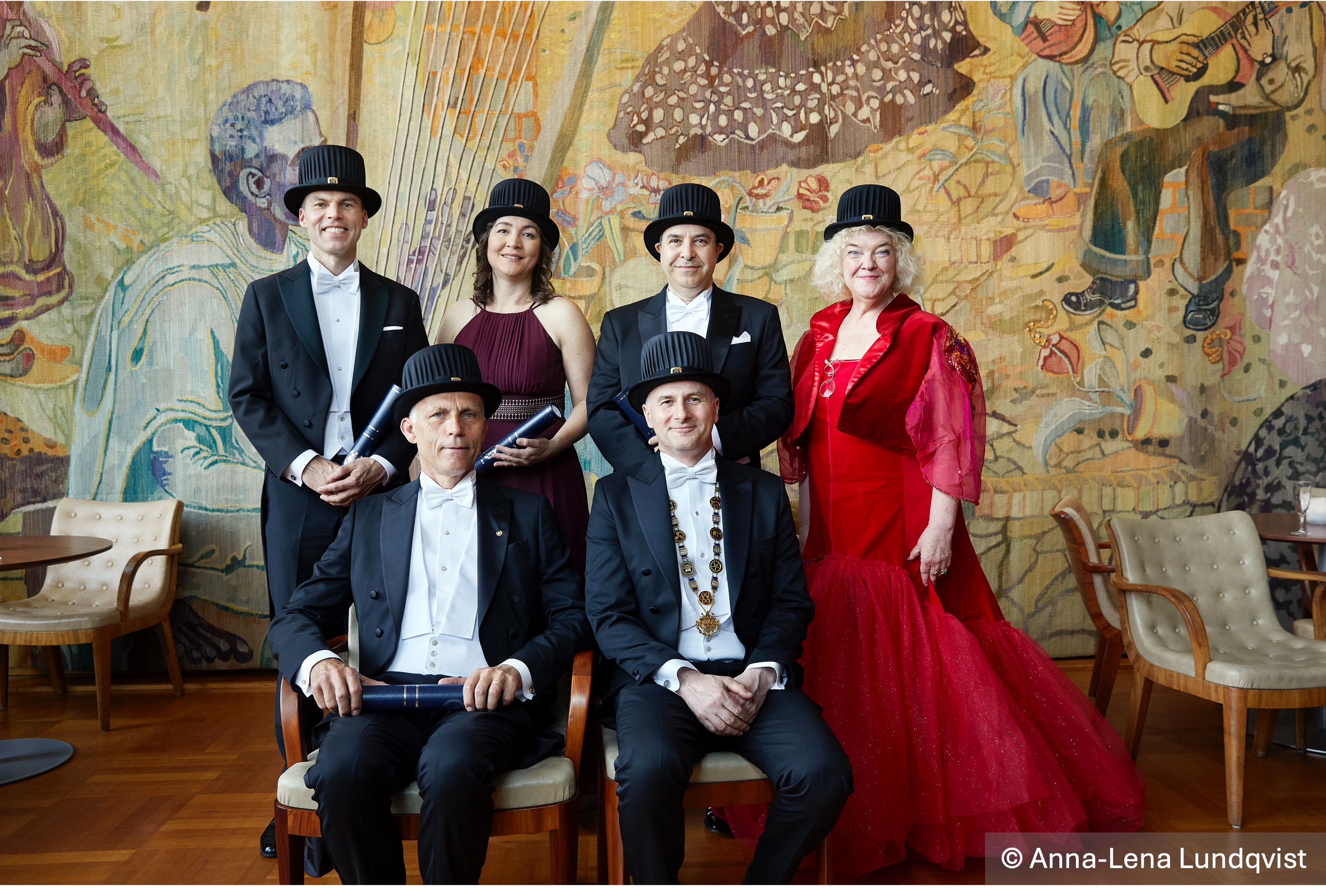 We are happy to announce that our spokesperson Julia Tjus has been officially named an Honorary Doctor of the Chalmers University of Technology as of May 24, 2025.
We are happy to announce that our spokesperson Julia Tjus has been officially named an Honorary Doctor of the Chalmers University of Technology as of May 24, 2025.
This prestigious recognition was awarded during the university’s annual academic celebration in the Gothenburg Concert Hall.
Julia has been honored for her groundbreaking contributions to astroparticle physics. Her pioneering work in neutrino astronomy and cosmic ray research, especially her collaboration with the IceCube Neutrino Observatory, has significantly advanced our understanding of the high-energy universe. Since her postdoctoral stay in Gothenburg, she has maintained a close connection with Chalmers University. As a Jubilee Professor in 2023 and now as an Associate Professor, she continues to strengthen the strong partnership with Nordic radio and neutrino astronomy.
We also extend our congratulations to the new doctors of Chalmers University, the honorary doctors Babak Hassibi (CalTech), Herre van der Zant (TU Delft), and Marcus Wandt (Saab/Esa), and Chalmers Supervisor of the Year Yinan Yu.
Please also have look at the news articles of Chalmers
and RUB News
Picture: All honorary doctorates: front: Herre van der Zant, Martin Nilsson Jacobi (President of Chalmers University), back: Marcus Wandt, Julia Tjus, Babak Hassibi, Eva Olsson (Chair of the Faculty Council)
- Details
IDEA-2025 Science Slam winner: Sruthi Ravikularaman!
Congratulations to the new CRC associate and DARK100 postdoc Sruthiranjani Ravikularaman!
Sruthi won the Science Slam at IDEA.2025 — the first Entrepreneurship Day hosted by the Worldfactory Start-up Center (WSC) of Ruhr University Bochum!.
In her winning talk Afraid of the dark? she brilliantly explained the concept of dark matter using the analogy of ghosts. She also discussed the unique dark matter detection experiment of the Dark100 project with PANOSETI telescopes.
The judges praised her ability to address complex challenges in her field with a blend of humor and insight, making her presentation both informative and entertaining.
This award gives Sruthi the unique opportunity to attend the Falling Walls Summit in November in Berlin:
Read more about the IDEA.2025 event here
- Details
IceCube Impact Award 2025
Congratulations to the SFB1491 members Giacomo Sommani and Niclas Krieger for receiving the IceCube Impact Award 2025!
The IceCube Impact Awards recognize significant contributions to IceCube - the neutrino observatory at the South Pole.
Giacomo received the Individual Impact Award for his outstanding work on the performance and robustness of the reconstruction of IceCube real-time alerts.
Niclas is part of the team that was honoured with the Group Impact Award for the development of the next-generation online and offline filtering and event selection for all IceCube data.
More information on the awards can be found
here.
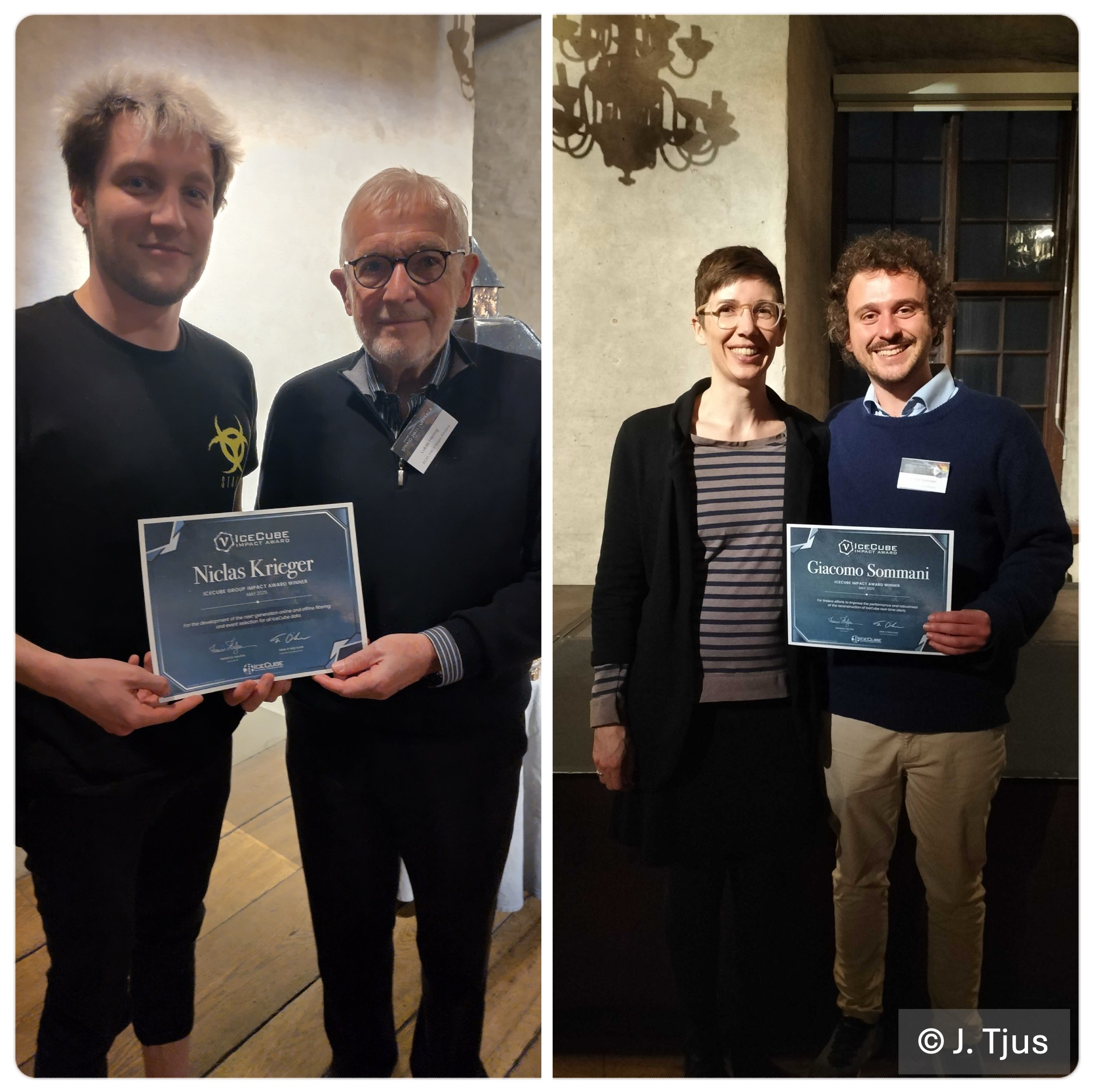
Picture: Niclas (left) and Giacomo (right) with collaborators.
- Details
2024 RUB student prize goes to a student of CRC 1316
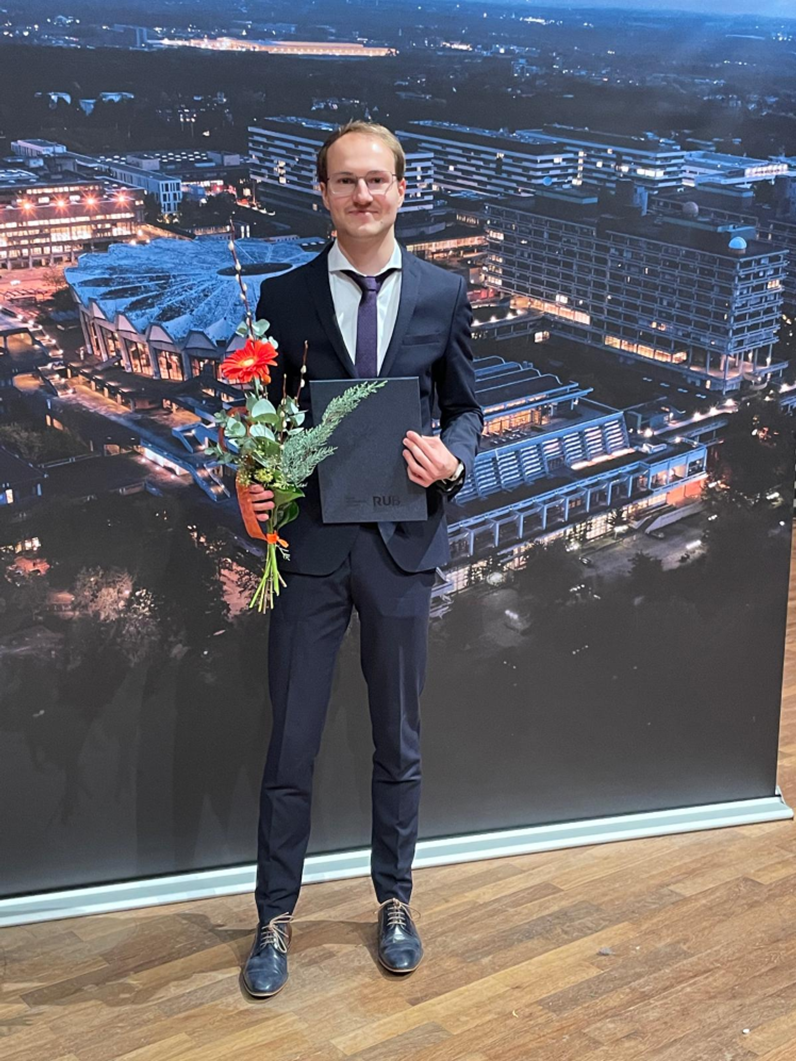 Huge congrats to Robin Labenski for winning the student prize for his master thesis at the Ruhr University!
Huge congrats to Robin Labenski for winning the student prize for his master thesis at the Ruhr University!
His master thesis “Laser induced influence of charges in a dielectric barrier discharge under atmospheric pressure” discusses the improvement of plasma catalysts using a metal grid array with cavities of diameters between 50 and 200 µm. Using an Nd:YAG laser, the surface charges of the reactor could be manipulated to investigate the behaviour of the discharge.
Fun fact: Project A6, where this thesis was set, seems to be very successful in winning this prize. 2021 David Steuer won it for his master thesis and in 2023 Henrik van Impel won the prize with his bachelor thesis.
- Details
Paper of the Year 2024 Award
Congratulations to Julien Dörner who has been awarded the SFB1491 Paper of the Year 2024 Award for his crucial contribution to the understanding of cosmic-ray propagation in the Galactic Center region!
The Galactic Center is one of the most fascinating yet complex areas in our Galaxy.
For the first time, Julien combined a 3D model of both the magnetic field configuration and the gas distribution with state-of-the-art cosmic-ray propagation modeling. He tested different anisotropic diffusion and cosmic-ray population models and compared their predictions to very-high-energy gamma-ray data. His model lays the foundation for future observations of the Galactic Center with the upcoming CTAO.
This research was published under the title "Impact of Anisotropic Cosmic-Ray Transport on the Gamma-Ray Signatures in the
Galactic Center” in the Astrophysical Journal, with Julien as the lead author.
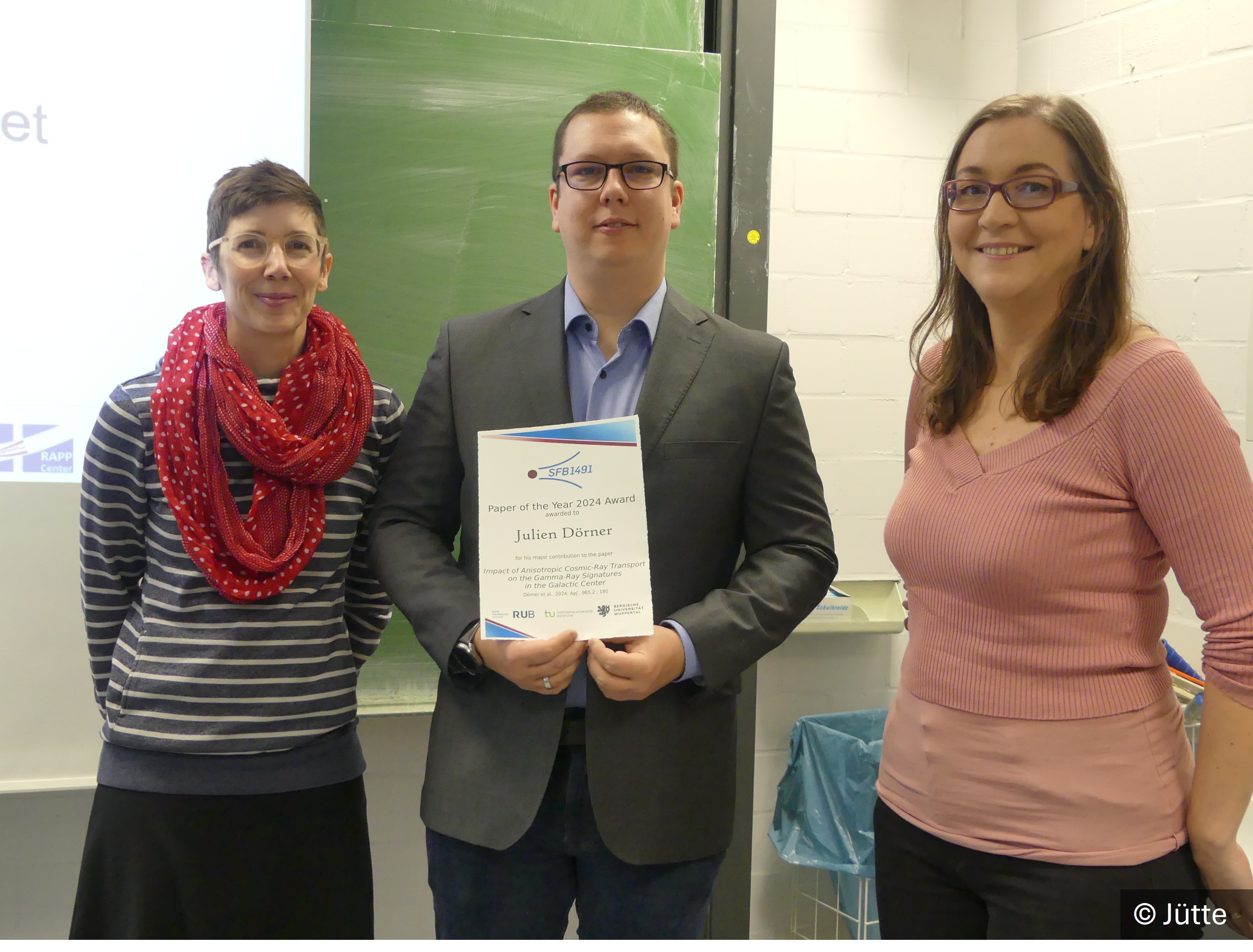
- Details
Tim Dirks wins Uwe Kappel Doctoral Prize
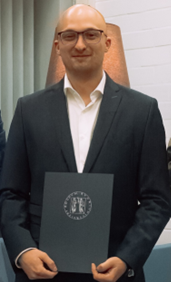 Congratulations to Tim Dirks, who has been awarded the Uwe Kappel doctoral prize.
Congratulations to Tim Dirks, who has been awarded the Uwe Kappel doctoral prize.
His PhD thesis entitled “Plasma-driven biocatalysis and the investigation of plasma-protein interactions“, addresses three challenges in plasma-driven biocatalysis: the inactivation of enzymes by reactive plasma species, the limited production rate of H2O2, and the limited availability of suitable biocatalysts. His outstanding work on a successful strategy to protect enzymes by immobilising and binding them to beads has significantly increased the efficiency of plasma-driven biocatalysis.
The Uwe Kappel doctoral prize was awarded for the first time in November 2024. The prize was established by the Faculty of Biology and Biotechnology in cooperation with the Society of Friends of the Ruhr University to support young researchers and to honour their outstanding achievements during their doctoral studies.
- Details
MAGIC Early Career Scientist Award winners
SFB1491 Early Career Scientist Jan Lukas Schubert, together with former SFB ECRs Simone Mender and Lena Linhoff, as well as Cosimo Nigro (IFAE) are awarded the Florian Goebel Prize for outstanding contributions of Early Career Scientists in the MAGIC Collaboration for their exceptional work on the automatic analysis pipeline autoMAGIC.
Congratulations Jan Lukas, Simone, Lena, and Cosimo for your distinguished contribution to the world of Astroparticle Physics!
